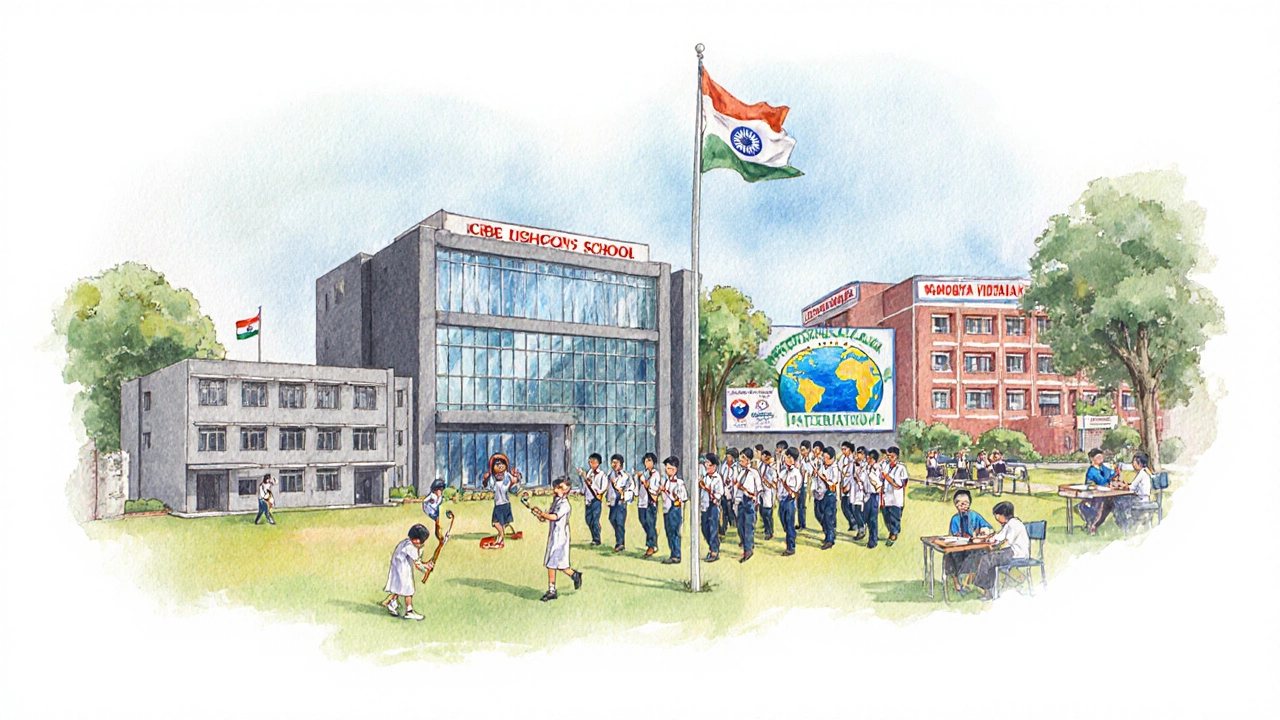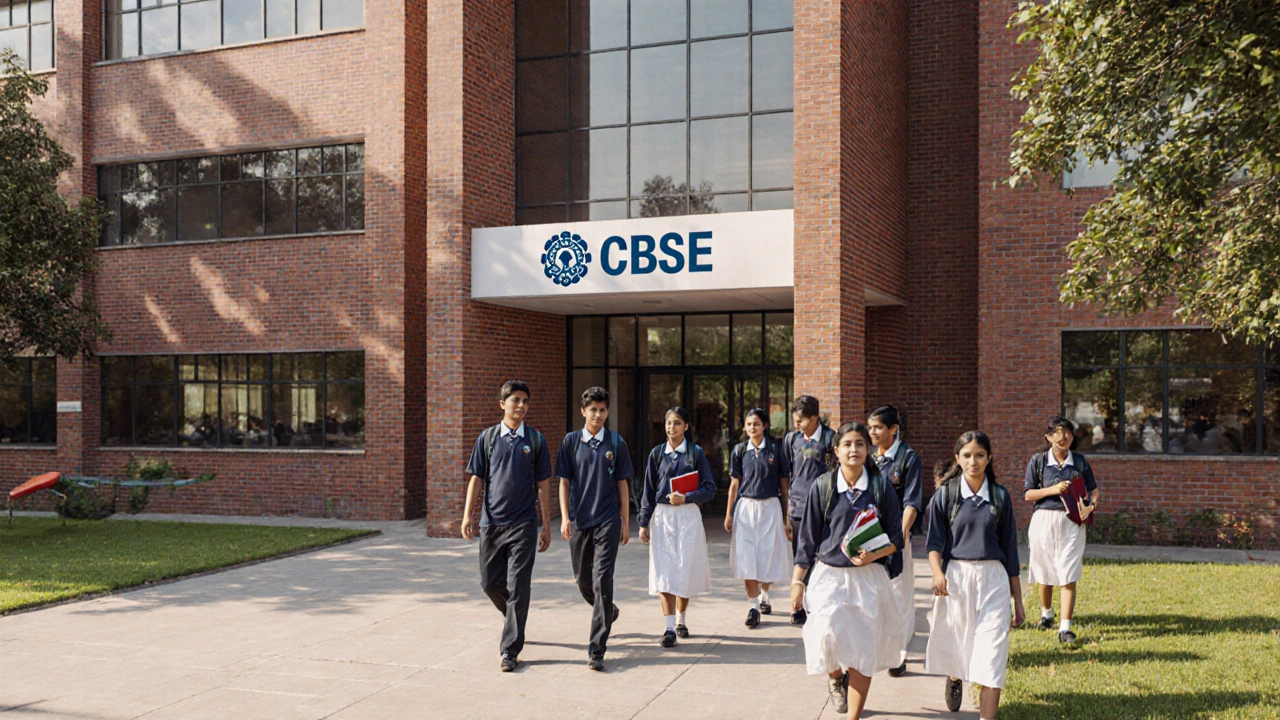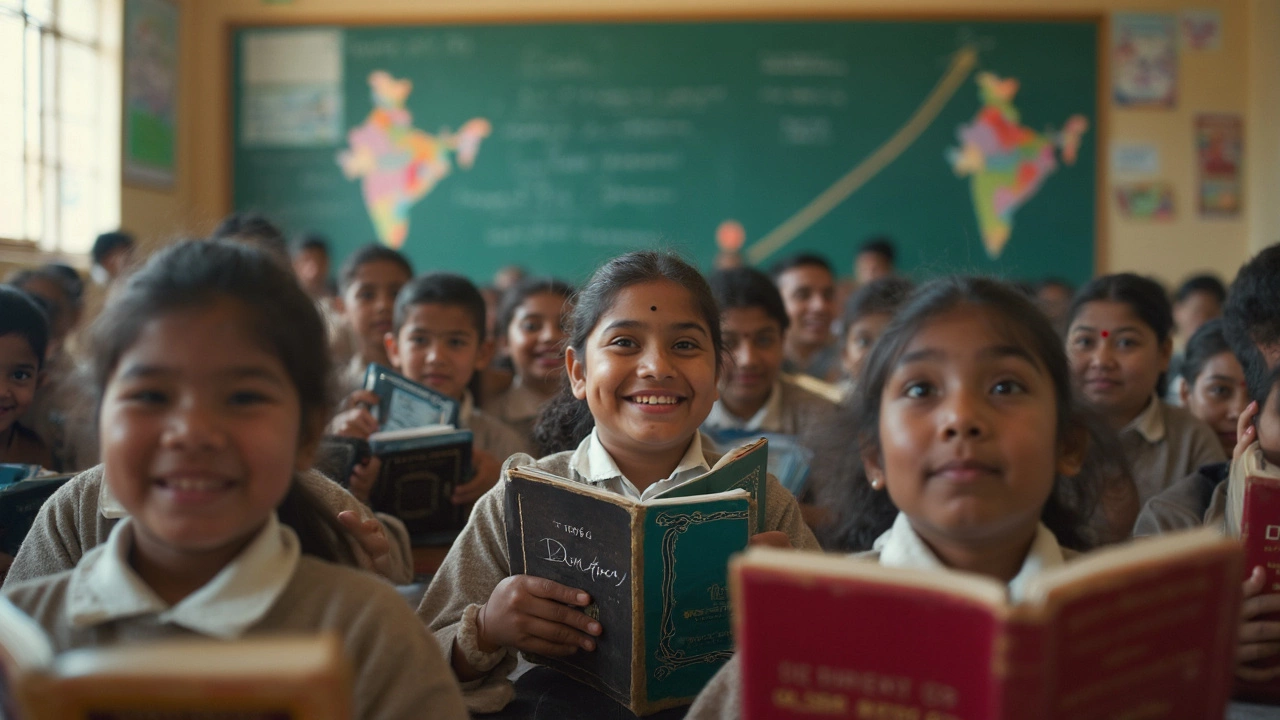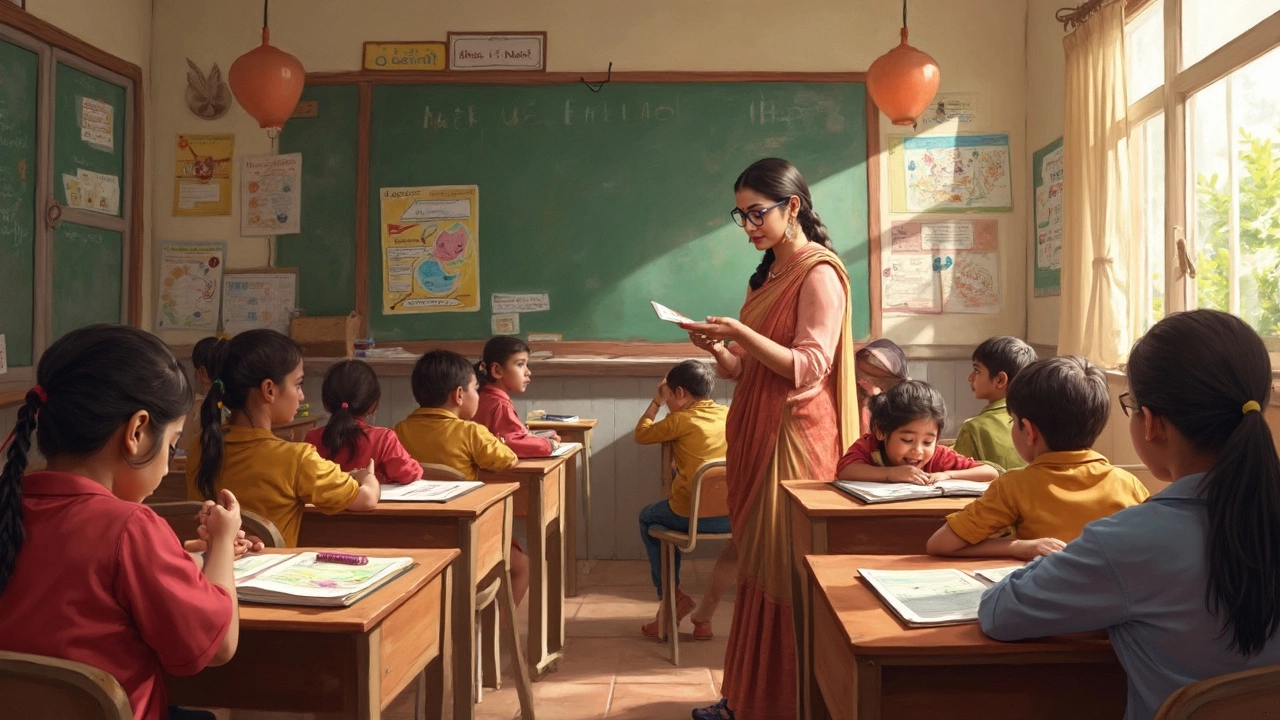When you hear CBSE is the Central Board of Secondary Education, the national authority that designs and regulates school curricula across India, the first question is what exactly a CBSE school is and why it matters for students, parents, and educators.
Key Takeaways
- CBSE schools follow a uniform national curriculum that emphasizes conceptual learning and competitive exam readiness.
- The board offers two major public exams - AISSE (Class10) and AISSCE (Class12) - which are recognized by top Indian universities.
- Affiliation requirements focus on infrastructure, qualified teachers, and adherence to board guidelines.
- Choosing the right CBSE school involves checking academic results, extracurricular balance, and proximity to your home.
- CBSE stands apart from other boards like ICSE and State Boards in terms of syllabus breadth and national acceptance.
What Defines a CBSE School?
A CBSE school is any institution that has received formal affiliation from the Central Board of Secondary Education. This affiliation authorises the school to teach the CBSE curriculum, conduct the board’s examinations, and award the AISSE and AISSCE certificates. The board’s guidelines cover everything from classroom size and lab equipment to teacher‑student ratios and assessment methods.
Where CBSE Fits in the Indian Education Landscape
India’s school system is a patchwork of national and regional boards. The three most common categories are:
- CBSE - the national board governed by the Ministry of Education.
- ICSE Indian Certificate of Secondary Education, a board managed by the Council for the Indian School Certificate Examinations - known for a broader literary focus.
- State Board Each Indian state runs its own board with curricula tailored to regional languages and needs.
Below the national level, the National Institute of Open Schooling (NIOS offers flexible, distance‑learning programs for students who cannot attend regular schools) provides an alternative pathway, especially for working students or those in remote locations.
Types of CBSE Schools
CBSE affiliation is open to a variety of institutions, each with its own ethos:
- Public (government‑run) CBSE schools - funded by the central or state governments and usually have lower tuition fees.
- Private CBSE schools - run by individuals or trusts; they often invest heavily in infrastructure and extracurricular programs.
- Kendriya Vidyalaya A network of centrally funded schools primarily for children of government employees - known for disciplined environments and consistent academic performance.
- Navodaya Vidyalaya Residential schools aimed at talented rural students, offering free education and boarding.
- International CBSE schools - blend the CBSE syllabus with global pedagogical practices, often catering to expatriate families.

How Schools Get CBSE Affiliation
The affiliation process is rigorous. Schools must submit an application, meet physical infrastructure standards (minimum classroom size, labs, libraries), and employ teachers with appropriate qualifications. The board conducts an on‑site inspection, verifies compliance with the Curriculum Framework, and issues a provisional affiliation, which becomes permanent after two years of satisfactory performance.
Key requirements include:
- Land area of at least 1,100sqm for primary schools and 2,000sqm for higher secondary schools.
- Qualified teachers: at least 50% must hold a graduate degree in the subject they teach.
- Lab facilities for Physics, Chemistry, Biology, and Computer Science that meet the board’s specifications.
- Adherence to the Academic Session calendar (April-March) and a documented evaluation policy.
Curriculum and Assessment: AISSE and AISSCE
The CBSE curriculum is structured around three core streams:
- Science - Physics, Chemistry, Biology, Mathematics, and Computer Science.
- Commerce - Business Studies, Accountancy, Economics, and Mathematics.
- Humanities - History, Geography, Political Science, and Psychology.
Students sit for two pivotal board examinations:
- AISSE All India Secondary School Examination (Class10) - tests foundational knowledge across subjects.
- AISSCE All India Senior School Certificate Examination (Class12) - provides the credentials needed for university admission.
Both exams use a mix of objective (multiple‑choice) and subjective (short answer/essay) questions, and the board publishes detailed marking schemes to ensure transparency.
Why Parents Choose CBSE Schools
CBSE’s biggest selling point is its national uniformity. A student moving from Delhi to Kolkata can continue in the same board without curriculum gaps. The syllabus is also aligned with major entrance exams such as JEE, NEET, and UPSC, giving CBSE students a competitive edge. Additionally, the board’s emphasis on practical labs and continuous assessment prepares learners for higher‑education demands.
How to Pick the Right CBSE School - A Practical Checklist
- Academic performance: Review the school’s AISSE and AISSCE pass percentages over the past three years.
- Teacher qualifications: Ensure at least half the faculty hold postgraduate degrees in their subjects.
- Infrastructure: Check for well‑equipped labs, a sizable library (minimum 5,000books), and safe playgrounds.
- Extracurricular balance: Look for clubs, sports teams, and community service opportunities.
- Location and transport: Proximity reduces commute fatigue; school‑run buses add safety.
- Affiliation status: Verify the school’s current affiliation certificate on the official CBSE portal.
- Fee structure: Compare tuition, lab fees, and extra‑curricular charges against your budget.

CBSE vs. ICSE vs. State Board - A Quick Comparison
| Feature | CBSE | ICSE | State Board |
|---|---|---|---|
| Governing body | Central Board of Secondary Education | Council for the Indian School Certificate Examinations | Individual state education departments |
| Exam focus | Science & math‑heavy, entrance‑exam friendly | Balanced arts‑science approach, detailed syllabus | Varies by state, often regional language emphasis |
| Language of instruction | English (optional Hindi) | English | Regional language + English |
| Recognition for higher studies | Nationally accepted; preferred for JEE/NEET | Widely accepted; strong for liberal arts | Accepted within the state; may need conversion elsewhere |
| Assessment style | Mix of objective and subjective; periodic tests | Heavier emphasis on descriptive answers | State‑specific patterns; varies widely |
Common Misconceptions About CBSE Schools
1. “CBSE is only for engineering aspirants.” - While the board’s syllabus aligns well with engineering entrance exams, it offers robust humanities and commerce streams too.
2. “All CBSE schools are the same.” - Affiliation sets baseline standards, but schools differ widely in teaching quality, extracurriculars, and infrastructure.
3. “CBSE isn’t rigorous.” - The board’s continual updates, especially in STEM subjects, keep it competitive on a global scale.
Future Trends: CBSE in 2025 and Beyond
The board has recently introduced a competency‑based curriculum for Classes9‑12, emphasizing critical thinking and real‑world projects. Digital classrooms, AI‑driven assessment tools, and a greater focus on life skills are reshaping how CBSE schools operate. Parents looking ahead should ask prospective schools how they are integrating these new initiatives.
Frequently Asked Questions
What is the difference between a CBSE school and a State Board school?
CBSE follows a national curriculum that is uniform across India, emphasizing science and mathematics, and its board exams are recognized nationwide. State Boards design curricula based on regional priorities, often include the state language, and their exam results are primarily accepted within that state.
How can I verify if a school is truly CBSE‑affiliated?
Visit the official CBSE website and use the “Affiliation Search” tool. Enter the school’s name or affiliation number; a valid entry will show the school’s status, zone, and the years of affiliation.
What are AISSE and AISSCE?
AISSE (All India Secondary School Examination) is the Class10 board exam, while AISSCE (All India Senior School Certificate Examination) is the Class12 exam. Both are conducted by CBSE and serve as the main qualification for further studies.
Do CBSE schools offer vocational subjects?
Yes. In recent years CBSE has introduced vocational streams like Retail Management, Hospitality, and Information Technology, allowing students to earn a certificate alongside the academic curriculum.
Is the CBSE curriculum more difficult than ICSE?
Difficulty is subjective. CBSE is streamlined for national exams and practical application, while ICSE is known for its depth in language and literature. Choice depends on the student’s strengths and future goals.


